
20 minute read
FROM THE COMMANDER
From the Commander, Capt. Dianna Wolfson:
Hello America’s Shipyard! Spring is here, and this month we are launching our Strategic Framework! Check out pages 5-10 of this issue of Service to the Fleet for more information. This is so important and exciting to me for bringing alignment to our strategic initiatives and efforts within America’s Shipyard. There are a number of products being disseminated to spread awareness about the framework and sharing within our work groups.
Advertisement
This framework should spur some significant discussions about our journey to improve our business and the relentless pursuit of world class performance as America’s Shipyard. In addition to the Strategic Framework, we are working many other improvements to provide superior service to the Fleet and fully support NAVSEA’s key priority. As Vice Admiral William Galinis shared, “The cornerstone of our Navy’s capability and success to operate forward is in its ships and submarines.” At America’s Shipyard, we’re at the forefront in ensuring that capability and success.
As you’ll see from the graphical representation on pages 6-7, our Strategic Framework organizes who we are and prioritizes what we do as a shipyard. Previously, our shipyard had its C.O.R.E. values, we had a mission and a vision, but our framework captures this and unifies it. It provides perspective on how all these parts serve the greater whole of meeting our mission: We repair, modernize and inactivate our Navy’s warships and training platforms working toward our vision to deliver on time, every time, everywhere to protect America.

To realize our vision and meet our mission, we must recognize what drives our attitudes and actions–our VALUES–which will continue to be our enduring C.O.R.E. values. Some of you may have had questions about what was going to happen with C.O.R.E. during my time in command. I think it helps everyone to know our values weren’t developed by shipyard leadership; they were developed by a cross-section of the shipyard workforce establishing needed behaviors to bring culture change and ensure mission delivery across all working levels. The C.O.R.E. values set the standard, and they endure because they are fundamental in how we should treat and value one another.
On the subject of C.O.R.E., we must continue to show respect and consideration for others while we combat the spread of COVID. We’re at the anniversary no one wants to celebrate, entering our second year of practicing our protective triad of mask wearing, frequent handwashing, and physical distancing. We have all endured COVID fatigue and want to get back to our preCOVID lives. But we’re not there yet, and may not be for some time. Fortunately, limited vaccinations have resumed for our personnel at Naval Medical Center Portsmouth, and the reported number of shipyard and community cases are trending down. But it takes more than relying on others to do the right things in a pandemic. It starts with everyone practicing our protective triad and showing respect for all in preventing the spread.
Last month we held our mandatory stand down for extremism training in accordance with direction from the Secretary of Defense (SECDEF) and the Chief of Naval Operations (CNO). Aligned with this training, I’ve also been having discussions in recent weeks about what it means to have an actively inclusive team in America’s Shipyard as prioritized in our Command Philosophy. An actively inclusive team exists where every member feels they matter, with their voices heard and opinions valued, which is essential to fostering an engaged, productive and inclusive environment. In addition to being what our teammates deserve, it’s how we excel in our mission by cultivating knowledge sharing, positive morale, and innovation across our organization.
As evidenced by our C.O.R.E. values, our shipyard has been encouraging self-reflection and personal accountability in how we all have a hand in shaping our organizational culture. But as part of that continuous look in the mirror, we must all reflect on the fact that our C.O.R.E. values will only bring lasting cultural change if we live them as well as learn them. Care is evident by an attitude of growing and developing together by sharing opportunities so the team can better support our common mission; Ownership is displayed in looking at problems as opportunities to improve and innovate–these align with our Command Philosophy priority of promoting workforce development and ensuring a sense of urgency and resolve at all levels of the workforce. Exhibiting Respect means valuing the person in front of you—by enhancing competence and character, making connections, and showing humility and respect to others.
Building lasting change with a constructive culture can start with your next interaction. Make it a positive one, and help our culture by committing to stamping out any harassing and offensive behavior. It’s important to remember when one of us is hurt through harmful words or behaviors, the team is weakened, and when the team is weakened, our ability to serve our Navy and nation is compromised. We’re getting a valuable reminder of that fact with Sexual Assault Awareness and Prevention Month (SAAPM) being held in April starting with our SAAPM kickoff April 9 at Bldg. 1500.
Our mission is too important to let any harmful behaviors undermine our awesome capabilities as ONE TEAM. Building ONE TEAM starts with us as caring and committed individuals invested in our team’s success. For us to be successful, it must be a way of life in all aspects of our work. #wegotthis
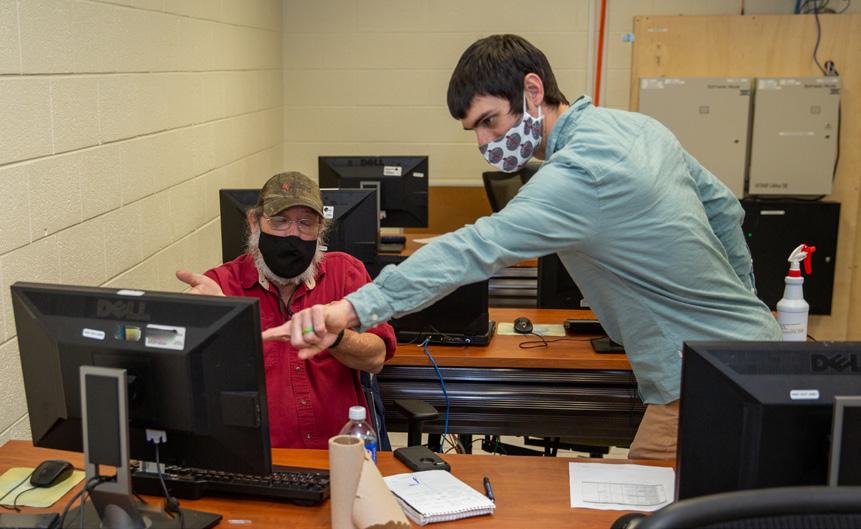
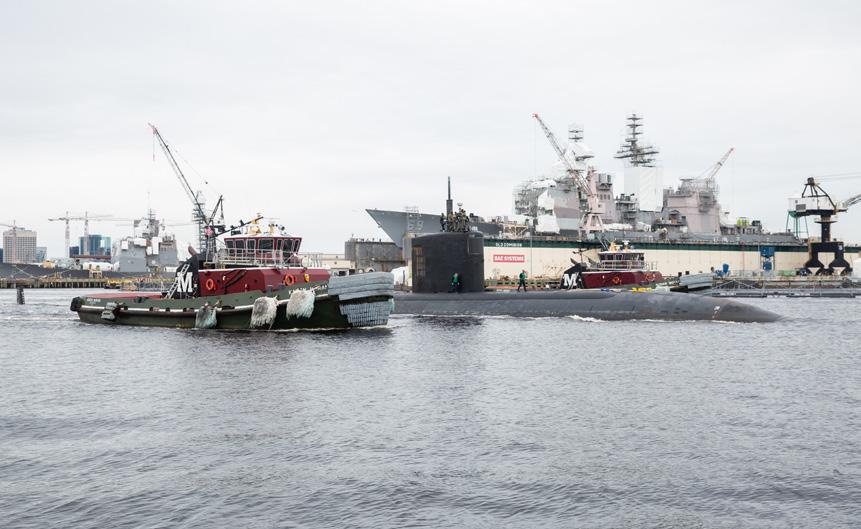

STORY AND GRAPHICS BY ALLISON CONTI • PUBLIC AFFAIRS SPECIALIST
Norfolk Naval Shipyard (NNSY) has unveiled its new Strategic Framework. This is a tool that communicates the shipyard’s path forward on achieving its vision of delivering on time, every time, everywhere to protect America.
According to Quality Assurance Director (Code 130) George Fitzgerald, “The Strategic Framework is important in aligning our efforts across the shipyard on the most important initiatives in order to improve our performance. Our framework will aid in communicating those initiatives across our workforce to engage everyone in our improvements.”
NNSY’s Engineering Planning Manager (Code 200) Mike Zydron added that the Strategic Framework will help unify the shipyard workforce to work as one team toward one mission. “The Strategic Framework is key to unite all members of the NNSY team, whether they are directly or indirectly working on the one mission of delivering warships and training platforms. Improved understanding of the urgency behind why we do what we do and how to continuously and measurably improve in order to achieve our vision will result,” said Zydron.
The visual representation of the Strategic Framework resembles a house with each element representing a different component of the structure. The bedrock of the house is the shipyard’s mission to repair, modernize, and inactivate our nation’s warships. The ridge of the roof is the pinnacle, Warships, the single word that ties together everything NNSY does. Each component of the house helps it stand strong and firm, just as each element of the Strategic Framework is essential in ensuring NNSY’s success.
But the Strategic Framework is more than just a picture, according to NNSY’s Chief of the Contracting Office (Code 400) Brad Crosby. “It’s where we document what is important to us and tie all of the elements together, to include mission, culture, results, vision, principles and the pillars. The framework is our common language to identify what’s most important for our organization and rally behind it.”
The Strategic Framework was created by a work group, comprised of NNSY Department Heads. The group was led by Lifting and Handling Department Director (Code 700) Terri Makely. Makely said of the working group: “each of them heavily invested their time and expertise to this important task. I am proud to be a part of this team as it demonstrates how powerful we can be when we work together to accomplish our mission.”
In the process of creating the Strategic Framework, the working group pulled from previous shipyard-wide efforts, including NNSY’s C.O.R.E. values of Care, Ownership, Respect, and Excellence. “We reaffirmed our commitment to our C.O.R.E. values – which has now remained through three commanders,” said Crosby. “The Strategic Framework is expected to have the same staying power. We do acknowledge that the framework isn’t carved in stone and will evolve over time. We’ll learn, grow, and make purposeful adjustments. This is about writing down what’s important, aligning us all, rallying behind the cause, and then working aggressively to improve the areas that make NNSY the shipyard the Navy needs as one team with one mission.”
Moving forward, NNSY employees will see frequent reference to the Strategic Framework in Service to the Fleet and other communication efforts. NNSY employees are encouraged to familiarize themselves with all elements of the Strategic Framework as the shipyard’s new tool is implemented.
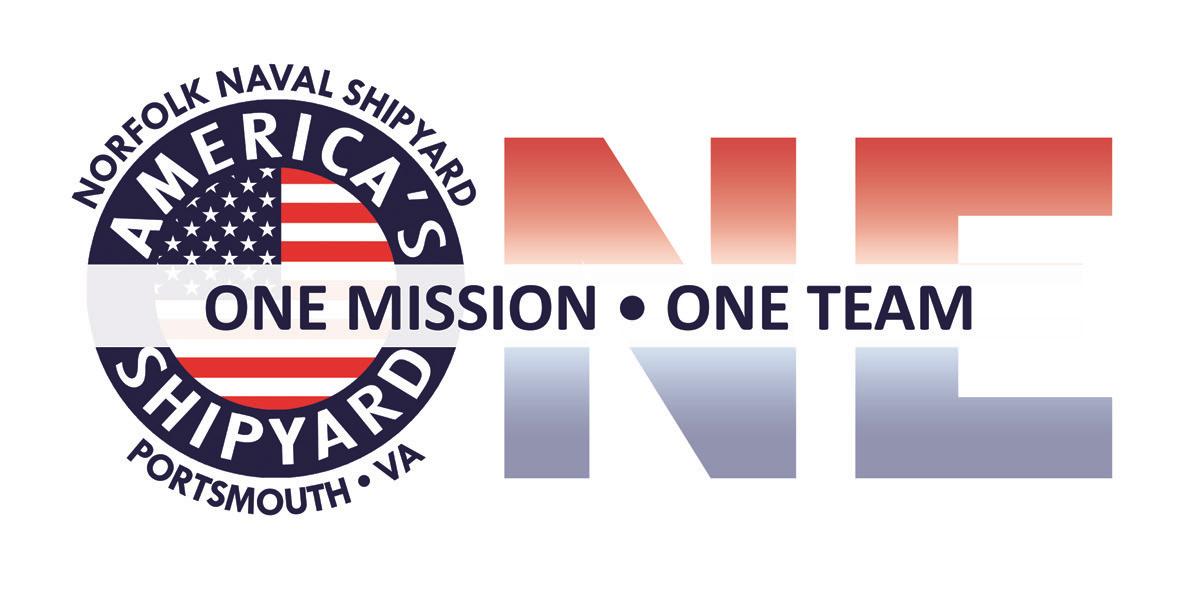
NUCLEAR PROGRAM PRINCIPLES
• Conservatism in design and operation • Strong central technical control • Verbatim compliance with approved technical procedures • Not “living with” deficiencies • Formal documentation and communication • Selection, training, and qualification of the best people, dedicated to excellence • Thorough involvement and review by senior personnel • No management system can substitute for hard work • Frequent, thorough, and detailed inspections and audits • Enforcement of standards • Responsibility is a unique concept • Attention to detail • Face facts brutally • If you can’t write it down, you don’t understand it • Completed staff work
COMMAND GUIDING PRINCIPLES
Win As a Team
• Respect every individual • Lead with humility • Create constancy of purpose • Think systemically
Excellence in All We Do
• Assure quality at the source • Seek perfection • Create value for our customer
Continuous Improvement
• Focus on process • Embrace scientific thinking • Improve flow and pull
Norfolk Naval Shipyard Strategic framework
WARSHIPS



VISION
RESULTS
Safety Quality Delivery Cost Invested Workforce
FOCUS AREA PILLARS
Nuclear Program Principles Infrastructure Dependable Mission Delivery People Development Process Improvement and Innovation
Care Ownership VALUES Respect Excellence CULTURE
MISSION
Increasing productivity through investment in people and improving business processes.
Command Guiding Principles
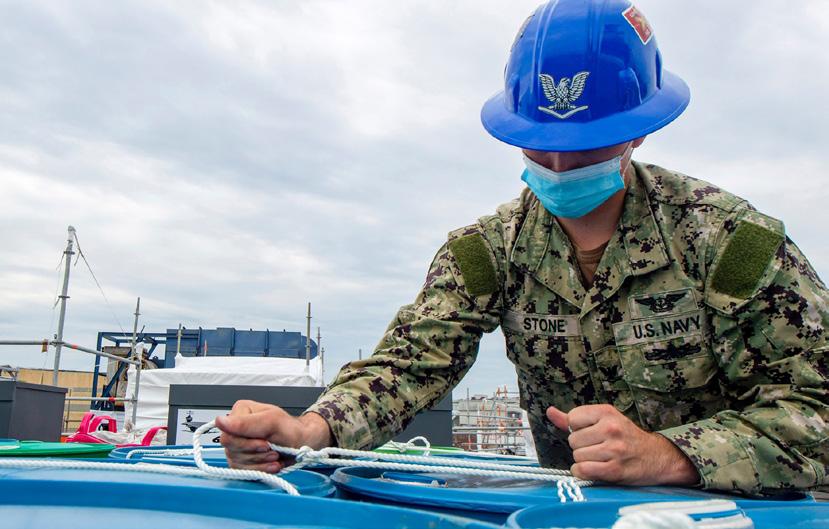


Our new Strategic Framework communicates our path forward on achieving our vision. The Strategic Framework is our tool to communicate our updated mission and vision statements both within NNSY and externally, and shows how initiatives executed across the command tie together with why our command exists (warships). More importantly, the visual representation of the Strategic Framework combined with purposeful command-level strategic initiatives will align us as ONE TEAM on pillars that have the greatest impact on performance and achieving ONE MISSION.
WARSHIPS
(PINNACLE)
This single word ties together everything we do. “Warships” should be thought of as all encompassing – it includes all varieties of ships including those that serve as training platforms, and those at the end of their operational life. It also includes those Sailors who man the warships as well as the sites used to train those Sailors.
MISSION
(BEDROCK)
Our Mission is the bedrock of our framework and all we do. It is why we are here, the reason each one of us comes to work every day. We repair, modernize and inactivate our Navy’s warships and
training platforms. VISION
(WHAT WE ARE STRIVING FOR)
The top of our framework, our Vision, is our desired future position, what we strive to achieve, our ultimate goal. Deliver on time, every
time, everywhere to protect America. CULTURE
(FOUNDATION)
We are bound by mission, strengthened by diversity, and reinforced by culture. Our team’s diverse backgrounds, perspectives, viewpoints, and skills are our greatest strength. Our culture will reinforce that strength by creating a more aware, inclusive, and empowered workforce. Culture is the foundation upon which the pillars stand, the vision is realized, and warships are successfully delivered. We commit to establishing and maintaining an environment where
people feel included and valued to do their best.
PILLARS
(BRIDGING THE GAP)
In order to bridge the gap between mission and vision, we identified critical focus areas – our pillars. These pillars are the highest priority strategic focus areas we must urgently work to improve.
Infrastructure
Improve facilities, equipment, information technology, phones, and wireless connectivity (inship, in-shipyard, and at off-yard sites).
Dependable Mission Delivery
Measurably increase the Productive Capacity (PC) to execute Intermediate and Depot (I&D) level core mission work within authorized staffing levels. PC is defined as the number of people executing wrench turning work within prescribed budgets on any given day.
People Development
Develop the whole person (technical skills, leadership skills and character development), through Brilliant on the Basics (from selecting the best candidate to becoming a subject matter expert).
Process Improvement and Innovation
Align and focus efforts to improve delivery of our mission, while accelerating, advocating for and fostering an environment and culture of Continuous Process Improvement and Innovation (CPI&I).
RESULTS
(HOW WE MEASURE OUR SUCCESS)
We are striving toward our vision, and assess progress by how we perform in the areas of Safety, Quality, Cost, Delivery, and building an Invested Workforce.

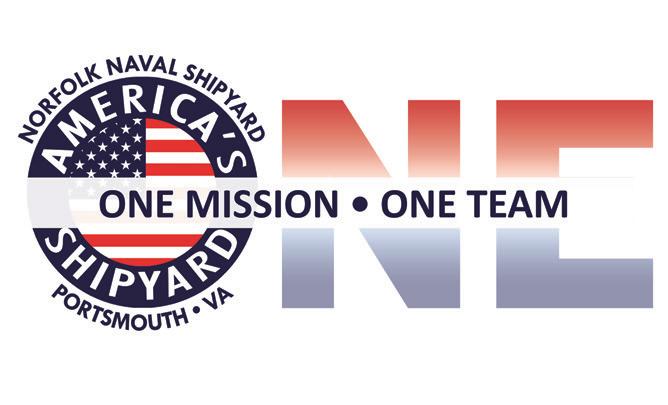
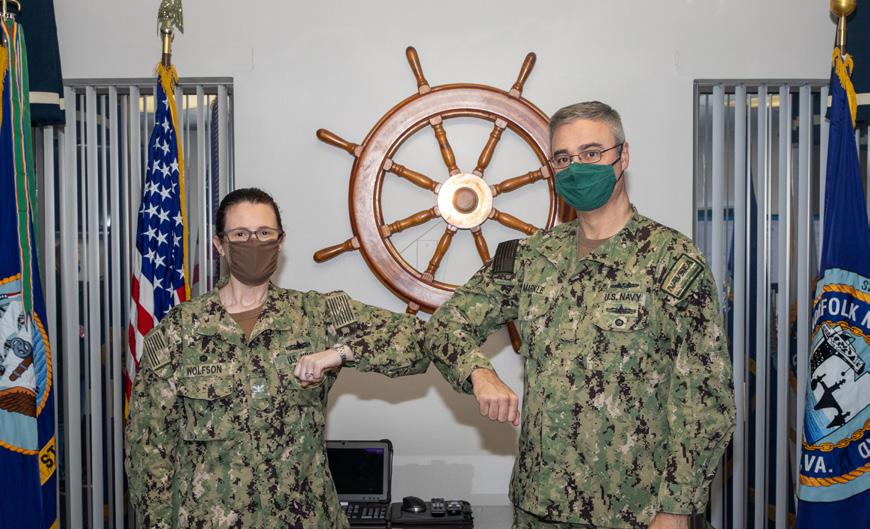

VALUES
(GUIDANCE) NE
Our C.O.R.E. (CARE, OWNERSHIP, RESPECT and EXCELLENCE) values are enduring and are included to remind us to accomplish our mission and reach closer to our vision in sustainable ways aligned to our principles. CARE: I am present and transparent. I choose an attitude of RESPECT: I approach all interactions with humanity and humility, growing and developing together by sharing opportunities so the valuing the person in front of me. I actively listen to understand so team can better support our common mission. I exhibit trust in the I can provide meaningful feedback that helps uplift not tear down. responsibilities I give and am given by taking pride in the quality of our work and the value it adds. EXCELLENCE: I will maintain the courage to stand firm on the core values of CARE, OWNERSHIP, and RESPECT. I value the OWNERSHIP: I am responsible for my attitude, behavior, decisions, shipyard’s success as my own. I embrace teamwork and innovation and all their positive and negative consequences. I see every problem in my pursuit of excellence. as an opportunity to learn, improve, innovate, and teach.
COMMAND GUIDING PRINCIPLES
Win As a Team
• Respect every individual: Respect must become something that is deeply felt for and by every person in an organization.
Respect for every individual naturally includes respect for employees, customers, suppliers, the community, and society in general. Individuals are energized when this type of respect is demonstrated. Most team members will say that to be respected is the most important thing they want from their employer.
When people feel respected, they give far more than their hands; they give their minds and hearts as well. • Lead with humility: One common trait among leading practitioners of organizational excellence is a sense of humility.
Humility is an enabling quality that precedes learning and improvement. A leader’s willingness to seek input, listen carefully, and continuously learn creates an environment where team members feel respected and energized and will give freely of their creative abilities. Improvement is only possible when people are willing to acknowledge their vulnerability and abandon bias and prejudice in their pursuit of a better way. • Create constancy of purpose: An unwavering understanding of why the organization exists, where it is going, and how it will get there enables people to align their actions, as well as to innovate, adapt, and take risks with greater confidence. • Think systemically: By understanding the relationships and interconnectedness of a system, people will make better decisions and improvements that will more naturally align with the desired outcomes of an organization.
Excellence in All We Do
• Assure quality at the source: Perfect quality can only be achieved when every element of work is done right the first time. If a defect occurs in a product or service, it must be detected and corrected at the time it is created. • Seek perfection: Perfection is an aspiration not likely to be achieved, but the pursuit of perfection creates a mindset and culture of continuous improvement. What is possible is only limited by the paradigms through which we see and understand the organization’s current reality. • Create value for our customer: Ultimately, value must be defined through the lens of what a customer wants and is willing to pay for. Organizations that fail to deliver both effectively and efficiently on this most fundamental outcome cannot be sustained long term.
Continuous Improvement
• Focus on process: All outcomes are the consequence of a process.
It is nearly impossible for even good people to consistently produce ideal results with poor processes. It is human nature to blame the people involved when something goes wrong or when the resulting product or service is less than ideal. But in reality, an issue is usually rooted in an imperfect process, not in the people involved. • Embrace scientific thinking: Innovation and improvement are the consequence of repeated cycles of experimentation, direct observation, and learning. A relentless and systematic exploration of new ideas, including failures, enables us to constantly refine our understanding of reality. • Improve flow and pull: Value for customers is highest when it is created in response to real demand and at a continuous and uninterrupted flow. Although one-piece flow is the ideal, demand is often distorted between and within organizations. Waste is anything that disrupts the continuous flow of value


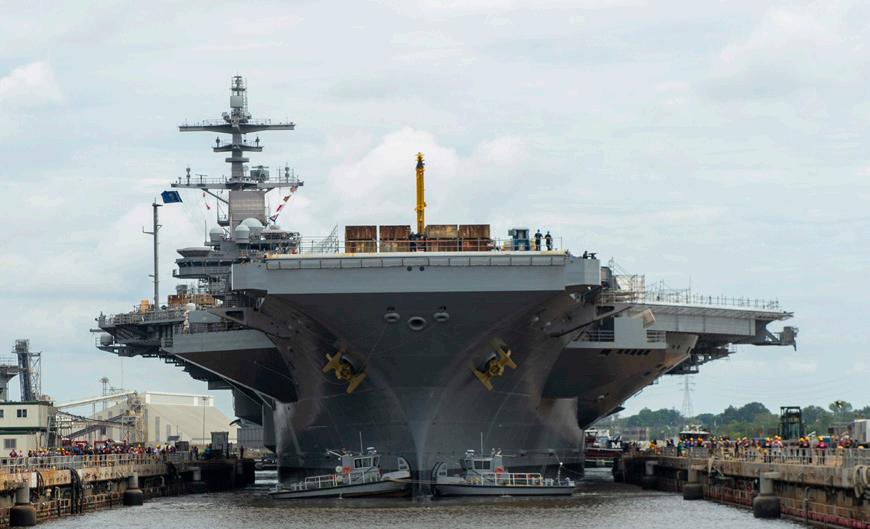
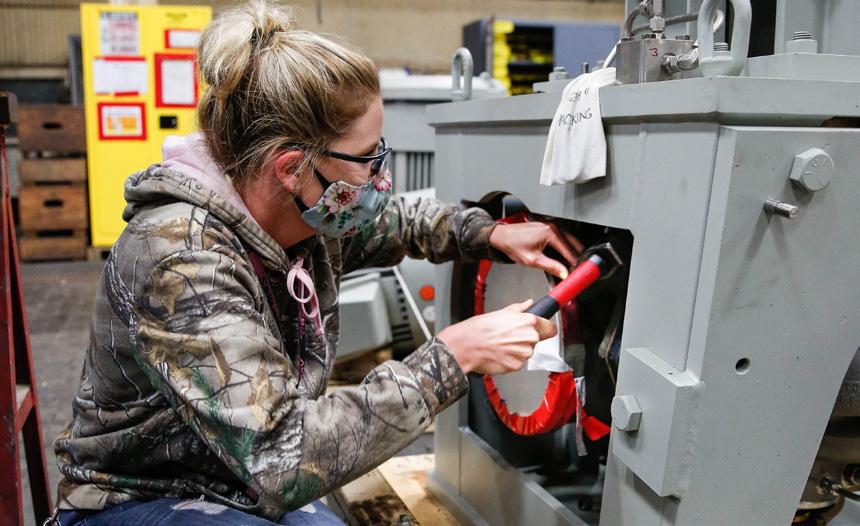
NAVAL NUCLEAR PROPULSION PRINCIPLES NE
Conservatism in design and operation
• Anticipate what may go wrong in the worst case scenario.
Establish safety margin by not operating near limits.
Strong central technical control
• Technical control centered at Naval Reactors ensures high standards and facilitates a consistent approach to nuclear work worldwide. This also ensures consideration of historical lessons and consistency in future plans and decision making.
Verbatim compliance with approved technical procedures
• Verbatim compliance is the foundation for consistently and predictably executing nuclear work. If processes or procedures cannot be followed, are wrong, or create safety problems –
STOP, document the problem, and get the process or procedure evaluated/changed.
Not “living with” deficiencies
• Have a questioning attitude and take ownership for resolving concerns. If something seems incorrect or out of place, investigate it and raise the question to supervision. Minor problems left to accumulate can have significant consequences and make it harder to identify major problems.
Formal documentation and communication
• When important decisions are not documented, one becomes dependent on individual memory, which is quickly lost as people leave or move to other jobs. Documentation minimizes the risk of repeating past mistakes and maintains alignment within and between organizations. Nuclear work is directed by formal, written instructions.
Thorough involvement and review by senior personnel
• Effective personal engagement by senior personnel provides forceful backup and the benefit of experience. Additionally, it demonstrates the importance of the task/event at hand.
No management system can substitute for hard work
• Human experience shows that people, not organizations or management systems, get things done. Nothing worthwhile can be accomplished without determination and hard work.
Selection, training, and qualification of the best people, dedicated to excellence
• Competent, committed, and experienced people are essential to our success. Seek out the best people, provide them with high quality training, and instill in them a dedication to achieve excellent results.
Attention to detail
• It is hard and tedious to pay attention to seemingly minor matters but when the details are ignored, the project fails. No infusion of policy or lofty ideals can then correct the situation. If the person in charge doesn’t consider the details to be important, neither will the subordinates.
Frequent, thorough, and detailed inspections and audits
• Even the most self-critical organization may miss deficiencies and performance problems from time to time. Independent inspections eliminate blind spots and reveal areas that require improvement and growth.
Enforcement of standards
• Apply continuous energy to ensure performance is always up to a high standard, otherwise performance and standards tend to decline. Standards must be set high to ensure performance doesn’t fall below minimum requirements when mistakes are made.
Responsibility is a unique concept
• Individuals feel the weight of responsibility for their work.
Shared responsibility results in no one being responsible. Unless the one person who is responsible can be identified when something goes wrong, then no one has really been responsible.
Face facts brutally
• It is a human inclination to hope things will work out. Face the facts objectively and make the necessary changes to achieve the desired outcome.
If you can’t write it down, you don’t understand it • It is easy to overlook important details in verbal discussion.
Writing down the plan brings to light missing details or weak arguments and increases the likelihood of success. If you don’t understand the plan well enough to write it down, you are bound to have unforeseen problems.
Completed staff work
• All of the questions have been considered and answered. This is the result of thorough research of the requirements and hard work on the part of the person assigned a specific task. The staff work is done when all that remains is for the supervisor to indicate their approval or disapproval.
BRAVO ZULU!
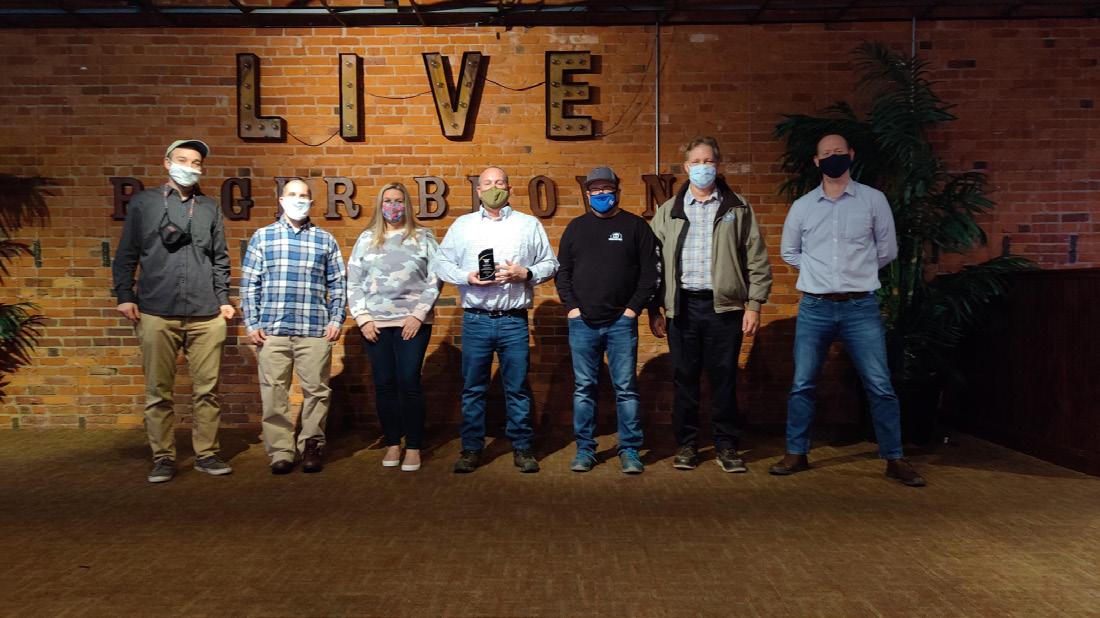
MEMBER OF THE YEAR CHRIS COMAR
Congratulations to Chris Comar, Norfolk Naval Shipyard’s (NNSY) Off-Yard Carrier Group Superintendent, recently honored as Member of the Year of NNSY’s Naval Civilian Managers Association (NCMA) Chapter! Comar was honored for being one of the chapter’s biggest supporters which included participating in NCMA community and social events, attending meetings and engaging new members. “Chris has long been an advocate and supporter of our chapter and has been an active and engaged member since joining,” said NCMA-NNSY Chapter President Andrew Kirby. “He has continuously nominated his people for awards over the last several years and made a point of shepherding numerous employees into our association that he’d mentored and advised over the years to help support our efforts and multiply our reach.” After receiving the award, Comar said, “It’s truly an honor to be considered, much less the selectee. NCMA is great organization with great folks and I’m proud to be a member! Keep doing great things!”

MANAGER OF THE YEAR RONALD STEWART, JR.
Congratulations to Ronald Stewart, Jr., honored as Manager of the Year by Norfolk Naval Shipyard’s Naval Civilian Managers Association (NCMA) Chapter! Stewart was recognized for his great work in 2020 as Acting Welding School Supervisor for NNSY’s Welding Shop (Shop 26) while still ably managing his duties as Continuous Training and Development Lead. Stewart has been known for his helpful “can-do” attitude during the pandemic while enforcing physical distancing, collecting required Personal Protective Equipment for his shop and providing helpful information for his work group.











